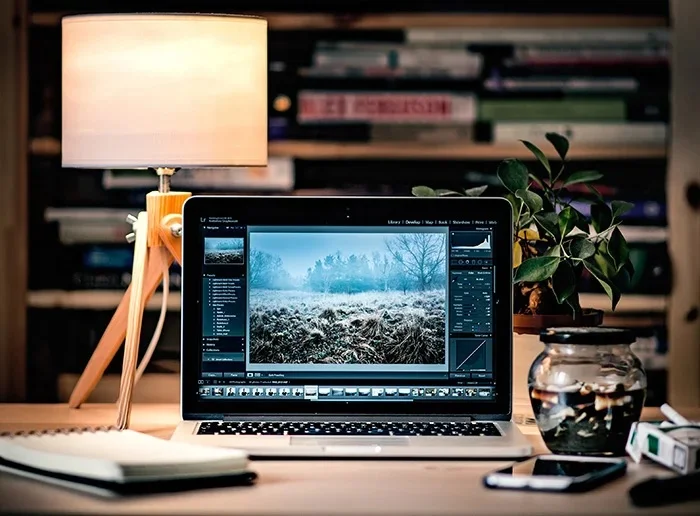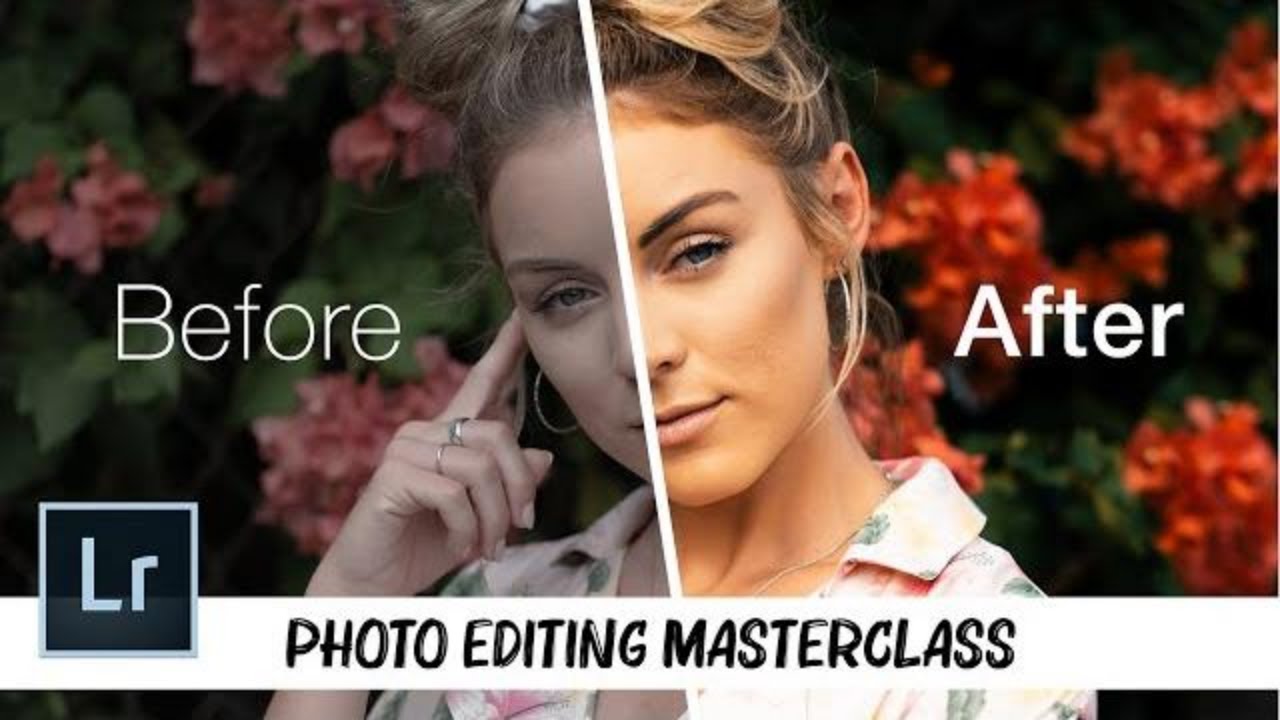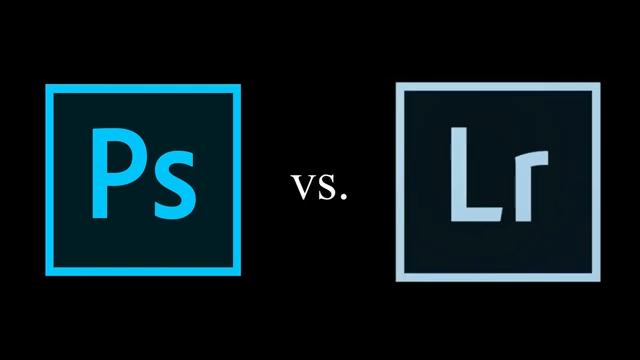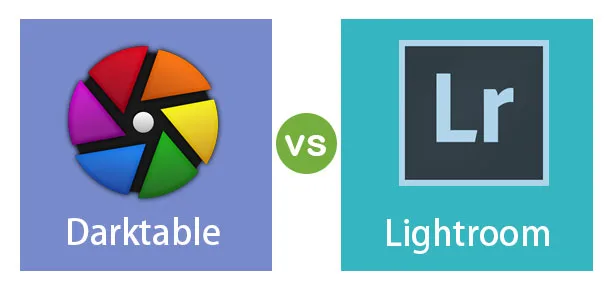How to Edit Photos in Lightroom: A Complete Guide
Adobe Lightroom is the most popular digital organization and editing software on the market today. It caters to both complete beginners and seasoned professionals, successfully balancing a simple interface with a wide range of features.
We have dissected the photo editing software to provide you with the ultimate guide to Lightroom. So, if you need to learn any processes or want to get the most out of this application, you have come to the right place!
The Ultimate Lightroom Tutorial
Adobe Lightroom has been on the market since 2007 and has grown with the development of digital photography. It was created by the digital editing specialists Adobe, who continue pushing digital image and video editing capabilities.
Our extensive guide covers almost all of the important features that Lightroom has to offer. Here, you can learn the very basics of advanced photo editing processes.
What is Adobe Lightroom

Adobe Lightroom is one of the best RAW processing and organizing programs. It covers the whole range of digital editing, except for complex manipulations meant for Photoshop. Lightroom consistently sets the bar for similar software.
Lightroom is popular with amateurs and professionals because it’s easy to use. The program performs well, from organizing to exporting. But these excellent features come at a price, as the latest versions are only available with a subscription.
Adobe keeps improving Lightroom by adding AI features. Users can now do edits that were once only possible in Photoshop. This means advanced adjustments are getting simpler, giving photographers an easier way to edit their images.
Lightroom is a great choice if you want an all-in-one program with advanced tools. It will help you organize and edit your photos from start to finish.
How to Buy Adobe Lightroom
Adobe Lightroom is a powerful photo editor and management tool used by millions worldwide. It comes in two main versions: Lightroom CC and Lightroom Classic.
Lightroom CC stores your photos in the creative cloud, allowing you to access your work from anywhere. Lightroom Classic focuses on a single user editing and storing files locally on their desktop machine.
Both versions require a subscription, with options for an annual plan or a monthly fee. You can also get Lightroom as part of the Adobe Creative Cloud Photography plan, which includes Photoshop. If you want to simplify your purchasing process, read our article on Buying Adobe Lightroom.
Navigating the Interface
One of Lightroom’s biggest strengths is that it provides a space to sort and organize our photographs. This is helpful as we cannot rely on normal computer programs to provide a way to sort our images.
In this section, we will cover the basics of how to import and export your images. We will also cover how the Catalog system works, helping you to understand the software better. There are also some helpful tips to streamline your workflow!
Importing Photos
Importing photos into Lightroom is simple. Connect your camera to your computer using a USB cable and turn it on. Click the Import button to bring up the import dialogue box.
In the left window of the dialogue box, select your camera. The photos will appear as thumbnails in the center window. Choose Copy or Copy as DNG at the top center of the screen.
Select the destination folder for your photos in the right window. You can also choose to rename the files, add copyright information, and apply develop settings during import. Once you’ve adjusted the settings, click the Import button to bring the photos into your Lightroom catalog.
Learning how to import photos into Lightroom is an essential first step in mastering this powerful editing software. With a solid understanding of the import process, you’ll be well on your way to organizing and enhancing your images like a pro.
Undertanding the Lightroom Catalog System
The Lightroom catalog system is a database that stores your photos and tracks the changes you make to them. It makes it easy to find and edit any photo in your library.
The catalog also stores metadata about your photos, like camera make and model, lens information, and camera settings. It can even store GPS location data for photos taken with a GPS-enabled camera.
Lightroom uses catalogs to organize photos. A single catalog can hold a huge number of images. You can sort photos inside a catalog using collections and smart collections.
To learn more about how the lightroom and Snapseed works, check out this in-depth guide that explains it in just 10 minutes.
Exporting Photos
Exporting photos from Lightroom is an important step in sharing your edited images. To export, select the photo and go to File > Export. Choose your export settings like file type, size, and quality.
You can export multiple photos at once by selecting them before starting the export process. The export settings will apply to all selected images.
Save time by creating export presets for common settings like web or print. To learn more about how to export photos from Lightroom, check out this in-depth guide.
Back Up Your Lightroom Catalog
Lightroom doesn’t actually store your photos. It simply stores information about them in a catalog. To avoid losing your edits, you need to regularly backup your Lightroom catalog.
Lightroom catalogs function as a database that references where your images are stored. Any information added to an image, such as edits, presets, stars, labels, or metadata, gets stored with the image file. Lightroom backs up your catalog, but not your photos or previews of them.
Backing up your photos and Lightroom catalogs are two separate processes that you should do regularly. Ideally, have two external backups and a backup in a cloud-based program. If you want to learn more about lightroom backup, there are great resources available to help you develop a solid backup strategy.
Helpful Tips and Techniques
Now, we have a wide range of tips and techniques to speed up your editing. Some features here are even helpful for experienced Lightroom users.
Here, we cover the basics, from cropping your photographs and histograms to flipping an image and changing its aspect ratio.
Learning different approaches to editing is beneficial for different situations. You may need to edit a wide range of photos simultaneously. This is where batch editing comes in handy.
Batch Editing
Batch editing in Lightroom lets you apply adjustments to multiple images at the same time. This can save you hours, especially if you edit photos from an event or photoshoot with similar lighting.
There are several methods for batch editing in Lightroom. You can batch edit during import, in the Library module, using the Sync or Auto Sync tools, with presets, or by editing metadata. The Auto Sync tool is particularly useful as it automatically applies any settings you edit to all selected photos.
The easiest way to batch edit is to create your own preset. Apply your favorite edits to one photo, then save those settings as a preset. You can then apply the preset to any photos in your library. To learn more about how to batch edit in Lightroom, these techniques can help speed up your editing workflow.
Resizing an Image
Resizing images in Lightroom is an important skill for photographers. It lets you adjust photo dimensions for different uses like printing, websites, or photo contests.
Lightroom offers several ways to resize photos. You can set the width and height, long edge, short edge, megapixels, or percentage. The process is simple and gives you full control.
When resizing, consider the best resolution for your needs. Use 72 PPI for digital images and 300 PPI for high-quality prints. Lightroom makes it easy to resize an image in Lightroom for any purpose.
Crop and Straighten Your Images
Cropping and straightening photos in Lightroom is simple. Access the Crop tool by clicking the grid icon or pressing R. Adjust the aspect ratio, angle, and overlay to suit your needs.
To crop, drag the handles at the corners of the grid. Use the lock icon to maintain the aspect ratio while resizing. Recompose your image using the overlay as a guide.
Straighten photos by using the Angle slider or by moving your mouse near a corner until a curved double arrow appears. Drag left or right until the photo looks straight. If you want to learn more about how to straighten photos in Lightroom, there are many helpful tutorials available online.
Master Exposure and Tonal Range
One of the most important aspects of photography is having a well-exposed image. If you cannot achieve this in-camera, Lightroom provides ways to save your image.
Editing the exposure allows you to achieve the perfect exposure and apply your own style. Read on below to learn more about how you can control your photograph’s tone in Lightroom.
Correct Exposure
Exposure is one of the most important aspects of photography. Underexposed images are too dark, while overexposed images are too bright. A well-balanced photo has details in both the shadows and highlights.
Shooting in RAW gives you more flexibility when editing exposure in Lightroom. The Exposure, Highlights, Shadows, Whites, and Blacks sliders in the Basic panel are the main tools for adjusting exposure.
To fix overexposed photos, start by lowering the Exposure slider. Then, recover lost details by pulling the Highlights and Whites sliders to the left. For underexposed photos, increase the Exposure and bring up the Shadows if needed.
You can also make local adjustments using the Brush tool. If you want to learn more about exposure in Lightroom, there are many helpful resources available.
Contrast and Tonal Controls
Contrast and Tone are among the most important aspects of photo editing in Adobe Lightroom. The Develop Module includes several settings to adjust these, which can greatly improve your photos.
The Exposure slider brightens or darkens the image, mainly affecting the mid-tones. The Highlights and Shadows sliders help recover details in very bright or dark areas. Use the Blacks and Whites sliders to set the black and white points, ensuring the image has the maximum dynamic range.
The Contrast slider splits the tonal range and moves each half in opposite directions. Increasing contrast can add more “punch” to an image, while decreasing it can create a softer look.
To quickly adjust all the tone settings at once, click the Auto button. If you’d like to learn more about lightroom contrast, check out our in-depth article.
Creating Effects in Lightroom
The Lightroom Effects panel offers a range of adjustments that replicate effects from different photographic tools and techniques. These include Texture, Clarity, Dehaze, Vignette, and Grain. Each effect can help you achieve a particular style or aesthetic in post-production.
Vignetting is a popular effect that draws attention to the center of the photograph by creating a gradual fade into the edges of the frame. Grain adds a gritty, rough aesthetic to a photograph, particularly effective in black-and-white photography.
The Texture adjustment subtly boosts the texture of specific details, while Clarity makes finer details more visible by affecting the contrast in the mid-tones.Dehaze is another useful tool that reduces atmospheric haze apparent in photos, allowing you to extract more detail.
By mastering these adjustments in the Lightroom Effects panel, you can take your photo editing to the next level. To learn more about the lightroom effects panel, check out our in-depth article.
Brushes and Filters in Lightroom
Lightroom filters and brushes give you more control over your photo edits. Filters like gradients and masks let you adjust specific parts of a photo. Brushes work like those in Photoshop, letting you edit by clicking or painting on certain areas.
The Clone, Heal and Remove brushes are in the Heal section. The Radial and Gradient filters, along with the custom editing brush, are in the Masks section. Learning to use all these tools well can help you make advanced edits without needing Photoshop.
To learn more about lightroom filters, check out our in-depth guide that covers each tool and how to use them effectively.
Alternatives to Adobe Lightroom
Adobe Lightroom is a brilliant all-in-one photo editor. If you are not convinced or want to save money, we have reviewed all the best photo editing software on the market today!
In our dedicated reviews, we have dissected each software program to see how it truly benefits the photographer. We have found that different software offers different features, making some more attractive to photographers of different expertise levels or genres.
If you want to learn more about each software, click the link at the end of the short review to access our in-depth article. To see a roundup of our top choices .


![How to import Presets in Lightroom 2024 [Mobile + PC]](https://lightroomodz.pro/wp-content/uploads/2024/05/How-to-add_import-Xmp-Presets-In-Lightroom-Mobile-Saha-Social-0-3-screenshot-768x432.png)
![How to use Motion Blur Lightroom Presets? Detailed Explanation [2024]](https://lightroomodz.pro/wp-content/uploads/2024/06/Motion-Blur-Lightroom-Presets-768x432-1.png)

